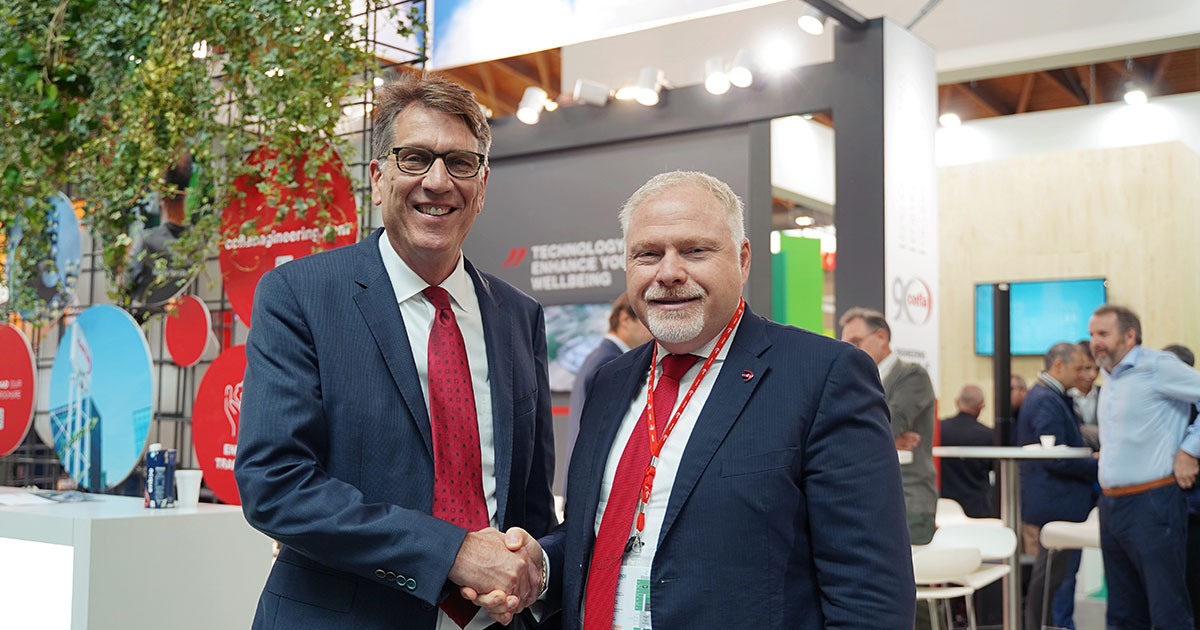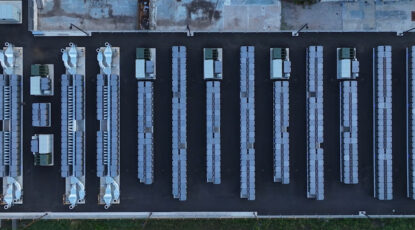In early November, I got to see the future of energy in Europe, and it looks green. Very green. I was at Ecomondo, the green business trade show in the Italian seaside town of Rimini, as the guest of Cefla, Bloom Energy’s partner in a plan to make fuel cells widely available in Italy.
I hadn’t been to Ecomondo before, but I really liked its energy: 70,000 people all looking for ways to be as sustainable and energy independent as the world now needs us to be. While their solutions may not be in place this winter to blunt the impact of Russia’s disruption, they are moving, unmistakably, in the right direction.
Bloom Energy is moving with them. Our fuel cells and electrolyzers can be an important element in Europe’s energy independence plans, and our partnership with Cefla will help make that a reality. The engineering, procurement and construction company will deploy Bloom’s highly efficient Energy Servers™, which can be configured to replace traditional combined heat and power (CHP) systems. This will help companies to address the gas reduction requirement recently approved by European Union energy ministers. Ferrari has added a 1 megawatt (MW) Bloom fuel cell platform at its Maranello, Italy, plant that will consume 20% less natural gas than conventional combustion power generation.
Fuel cells can also put CHP cogeneration on the path to full decarbonization. Combustion-based CHP systems– gas turbines, reciprocating engines and microturbines—produce particulates, nitrogen oxides and sulphur oxides. But with fuel cells, NOx and SOx emissions are negligible, as are particulates and methane, and CO2 is significantly reduced. Fuel cells also can operate on responsibly sourced gas, biogas, hydrogen, or a blend of fuels.

Bloom Energy and Cefla at Ecomondo in Rimini, Italy
Biogas from wastewater treatment plants and farms
While Europe now faces a natural gas shortage, it has other options. Every major city has large sewage plants, which means that they have access to biogas that is largely vented off now.
When the organic waste left after sewage treatment decomposes anaerobically, it generates large amounts of methane, a powerful greenhouse gas. Instead, the waste can be put through a digester and turned into a biogas that can be fed into a fuel cell. Water utilities can then use their own power to run their treatment operations. Reducing energy usage is one of the key objectives of the pending revision of the EU directive on wastewater treatment.
Europe also has biogas from agricultural operations. While Europe’s farms are smaller than those in the United States, modular fuel cell installations like those pioneered by Bloom could convert biogas to electricity on site, and again eliminate methane. Dairy and swine farms in the U.S. are already doing this.

Massimo Milani, Managing Director of Cefla Engineering, speaks at Ecomondo.
Clean hydrogen from renewables
Europe has a large base of nuclear power plants and, paired with electrolyzers, they can produce low-cost, zero-carbon hydrogen from the steam that is now being vented off.
This is not a hypothetical. In a project with the U.S. Department of Energy’s Idaho National Laboratory, Bloom’s high temperature electrolyzer is producing hydrogen at record-setting efficiencies. Electricity accounts for up to 80 percent of the cost of producing hydrogen now, and hydrogen produced from renewables will see the most significant cost reductions of any renewable over the next several years. It is projected to reach cost parity with grey hydrogen by 2030.
Our electrolyzers also can make a powerful partner of wind and solar power. They can be used to produce hydrogen at scale from excess wind or solar energy, which can then be used as a feedstock, fuel source, or energy storage medium. And while batteries can supply energy for a few hours, hydrogen is a long-term storage solution.
A basic human need, met without disruption
The International Energy Agency’s 10-point plan to reduce the EU’s reliance on Russian gas briefly mentions the options I’ve outlined, but they deserve more than a flyover if European power consumers, especially those in industries that have been hard to decarbonize, are to envision implementation. Cefla’s leaders are ready to make this a reality and Bloom is proud to be working with them on it.
Tim Schweikert is the Senior Managing Director, International Business, for Bloom Energy, a California-based maker of solid oxide fuel cells and electrolyzers.



